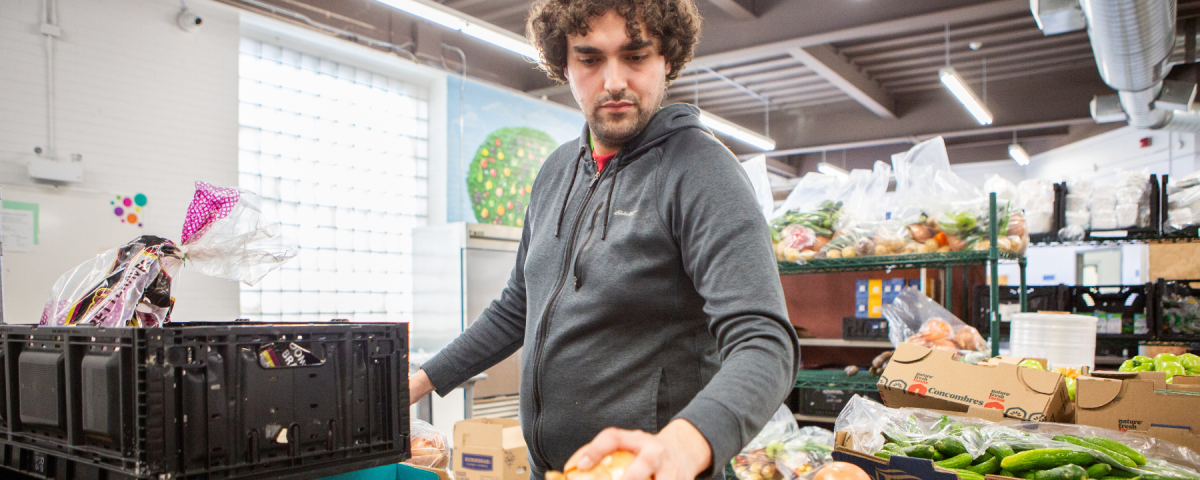Food Banks Were Supposed to be Temporary

By Tyler Firth, Mission Services Board Member
Once a week, I volunteer at Mission Services’ Good Food Centre (GFC) food bank.
When I arrive in the morning, the space is orderly and quiet. The shelves, fridges and freezers are well stocked and there is usually a colourful array of fresh produce. The staff and volunteers are animated, energetic and cheerful in anticipation of the day’s service.
Outside, a line of people snakes its way from the entrance toward Wentworth Street. It’s not unusual for the line to be 50 or 60 metres long. Those at the front have normally been queuing for two hours or more. It’s particularly cruel on mornings when temperatures plunge to double digits below zero.
Full service occurs over the course of three and half hours three days a week. The GFC’s model has evolved over the past couple of years from one where food is packaged and distributed to a more natural, compassionate one where service users “shop” for what they need.
By the end of the session, empty boxes are strewn haphazardly behind the service tables. Fridges are forlornly bare and dry goods shelves depleted. Staff and volunteers are tired and haggard.
It’s not unusual in my conversations with friends, family and even with Mission Services personnel to hear questions about the GFC model. “Does everyone who goes there really need it?” is a frequent query.
My response is typically a short summary of the general state of the wealth and income inequality raging in our society, “The need is obviously great.”
It wasn’t supposed to be this way.
According to the Canadian Encyclopedia, the first food bank opened in Edmonton in 1981. This was in response to a deep, nagging economic recession. The thinking at the time was that the problem of food insecurity would be temporary.
When the economy started growing again and unemployment rates fell, food banks would close.
Instead, food banks like the GFC have become commonplace in cities and towns across Canada. Rather than close when economic growth returned, a thriving food bank infrastructure developed and today it supports millions of families and children across the country.
Food banks have become a fixture during both recessionary times (1990-92, 2008-09, 2020) and when the economy booms.
Food Banks Canada, a national umbrella organization, reports some sobering data. In March 2024, there were more than 2 million visits to food banks, the highest number recorded.
Children represent one third of all visits at almost 700,000 visits in any given month. Food bank usage is about 90 per cent higher now than it was in early 2019.
How did this happen?
Coincidental with the emergence of Canada’s food bank “industry,” our federal government adopted a neo-liberal economic model of widespread privatization of social and government services, deregulation and lower taxes on large corporate interests and the wealthy.
We are reaping now what policymakers sowed 40 years ago.
Canadian economist Lars Osberg, captures the phenomenon in his 2018 book, “The Age of Increasing Inequality.” His data show how large swaths of our society, the poor, the disabled, working and middle class families, have seen their financial positions stagnate in the past four decades.
Hence the need for food banks like the GFC.
May 3rd marked the 18th edition of the Kirkendall Food Drive, with over 11,000 lbs collected for the GFC.
Even if you aren’t a Kirkendall resident, Mission Services welcomes food and financial donations at any time.
Until we can finally eradicate food insecurity and reduce wealth and income inequality, food drives like Kirkendall’s and food banks like the GFC will continue to play an important role in offering hope to those in need.
Just look around you; the need is obviously great.
This op-ed appeared in the Friday, May 2nd edition of the Hamilton Spectator.




